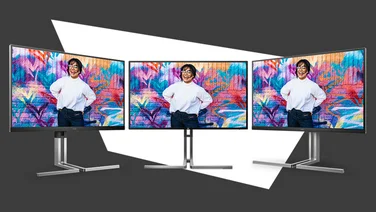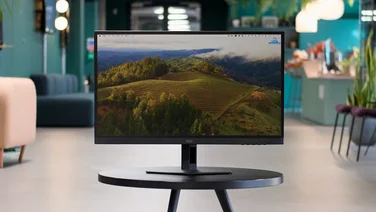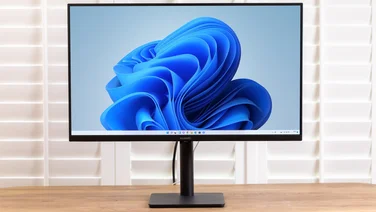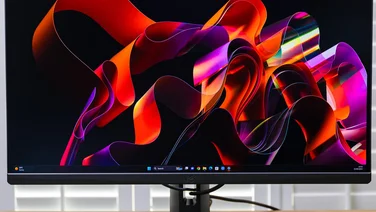To help us provide you with free impartial advice, we may earn a commission if you buy through links on our site. Learn more


Viewsonic’s new VA2248-LED is a Full HD monitor with LED backlighting and both analogue VGA and digital DVI inputs. It supports HDCP copy protection via the DVI port, so with a cheap HDMI-to-DVI adaptor you can watch copy-protected content such as Blu-ray films. The monitor has no speakers, so you’ll need an external set for audio.

At this price we wouldn’t expect many bells and whistles, so the lack of an HDMI port comes as no surprise. Similarly, the menu system is fairly basic and only gives control over brightness, contrast and colour temperature. Colour temperature ranges from a cool, blue-tinted 9300K to a warm 5000K, with separate sRGB and User settings.
Strangely, the sRGB setting was far too dark, and as it disables brightness and contrast settings there’s nothing you can do to correct this. We kept it at the neutral 6500K setting, which on many monitors is equivalent to the sRGB setting. Thanks to a bright and even backlight, colours were natural, with no sign of a cast. There’s also a dynamic contrast setting, but we found it tended to simply darken the image.

In fact, the VA2248-LED’s image quality is excellent, but comparing it to the similarly-priced Philips 221V2SB, we found that colours weren’t quite as bright and vibrant. For example, in our test Blu-ray of Casino Royale, M’s face in the Caribbean sunshine lacked the rosy glow that the Philips 221V2SB gave it. In the scene with Bond’s train wending its way through the dark, Montenegrin countryside, the grass and trees didn’t look quite as green and yet the shadows seemed less foreboding than on the Philips’ monitor.
There are other reasons to prefer the slightly more expensive Philips. The VA2248-LED’s shiny, angular bezel distracts from the picture, and its design looks garish compared to the plain Philips monitor. Ultimately, although both monitors are very evenly matched and cost roughly the same, the Philips 221V2SB has slightly better image quality, making it the better choice, although it uses marginally more power.






